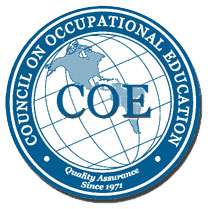What the Public Needs to Know about STIs and HIV
On September 26th, 2019 there was an STI seminar accompanied by an HIV testing service provided by The Department of Public Health. There was a very informative presentation that covered several important facts about STIs and HIV. The Department of Public Heath covered topics such as:
- Ways to prevent or reduce infection
- What to do if you become exposed to HIV
- Medications used to treat symptoms of HIV
After the STI seminar, an HIV testing event was offered to the public. As a community it is important to educate ourselves to limit the number of new cases of HIV that are reported each year. There are a few facts that are noteworthy when dealing with the spread of STIs and HIV.
Ways to Prevent STI and HIV Infection
According to the Department of Public Health, HIV is 100% preventable. There are a few ways we can reduce, if not, eliminate the probability of becoming infected.
- Maintain a monogamous relationship
- Use protection
- Test for STIs and HIV regularly
- Take PrEP (Pre-Exposure Prophylaxis) to reduce your chances of infection
- If exposed to HIV seek medical attention to start PEP (Post-Exposure Prophylaxis)
If you and a potential sexual partner is tested you can reduce your chances of getting an STI. Prevention is the best way to help end the spread of STIs and HIV globally.
What to Do Post-Exposure to HIV?
Fortunately, if you have been exposed to HIV regardless of how, you can stop the infection by starting a dose of PEP. The first step in starting treatment is to be tested negative. Once you’ve been cleared, then a physician will prescribe you PEP for a total of 30-days.
Even if you are unsure if an individual is HIV positive you should be tested within the first 72-hours once exposed, so you can stop any chance of infection. After 72-hours, you may already be infected with HIV.
Medications Used to Treat Symptoms of HIV
There are two medications used by physicians for different HIV scenarios. If you are at a higher risk of becoming infected with HIV then PrEP (Pre-Exposure Prophylaxis) may be prescribed to you. People who are at a higher risk of contracting HIV include:
- Drug injection users
- If you are HIV positive and plan on getting pregnant
- People who engage in frequent sexual activities
- Having a partner that’s HIV positive
- A person who doesn’t practice safe sex
PrEP is most effective when taken every day. If not taken correctly, then your chances of becoming infected rise substantially. PrEP reduces the risk of infection by 99% and reduces the risk of infection in drug users when taken consistently by 74%.
If you think you may have been exposed to HIV, then PEP may be prescribed to you. This is Post-Exposure Prophylaxis that can only be prescribed if you have tested negative for HIV and if it hasn’t been more than 72-hours since you’ve been exposed.
This is the only option to prevent infection once you’ve been exposed. Most insurance companies will cover the cost of PrEP and PEP. If you are low-income or may not have health insurance, there are payment plans in place to offer these medications to everyone.
How can you make a Change?
The effort a person invests into routine testing can change the lives of so many people. With more individuals being tested we can remain knowledgeable in our efforts to prevent the spread of disease in our communities.
Without proper education and the right treatment plan, the number of people who are HIV positive may go undetected since symptoms may not be visible. Find a testing site near you, and take the first step in preventing the spread of STIs and HIV.


